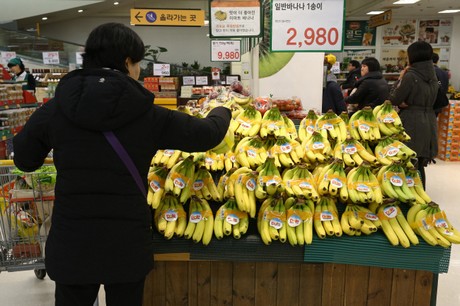 diversity of Korea’s imported fruits have grown in the past decade since the country first began signing free trade agreements in 2003, the Korea Customs Service said Tuesday.
diversity of Korea’s imported fruits have grown in the past decade since the country first began signing free trade agreements in 2003, the Korea Customs Service said Tuesday.A trend analysis revealed that Korea’s fruit imports have increased 3.3 times in terms of value and 1.5 times in quantity. Korea imported $286 million worth of fruits in 2003 and $929 million last year, an average annual growth of 12.5 percent.
The United States has remained Korea’s largest fruit source since 2012 when it provided 37.9 percent of Korea’s imports, while the Association of Southeast Asian Nations was close behind with 35.5 percent, followed by Chile with 17.6 percent and Peru with 1.6 percent.
Imports from FTA nations accounted for over 90 percent of Korea’s total imported fruits, according to the KCS. Most of the imports were tropical fruits that can’t be grown locally such as oranges, bananas, kiwis and pineapples.
In 2003, the biggest fruit imports were oranges at 39.4 percent and bananas in second place at 31.8 percent, but the trend has turned, with bananas coming out on top at 27.3 percent last year, followed by oranges at 21 percent. Grape imports also grew a considerable amount from 7.5 percent in 2003 to 20.3 percent in 2013.
Moreover, with the rise in imports of lemons, mangos, grapefruit and other fruit, the selection is proving to have diversified.
Meanwhile, Korea’s fruit exports in 2013 amounted to $120 million, which is 2.2 times more than 10 years ago ― primarily due to larger exports of strawberries and persimmons, the KCS said.





